The name of our neighboring municipality Maiolati Spontini intrigued me from the moment we came to live in Poggio Cupro. Spontini turned out to be the name of a very important composer at Napoleon’s court.
He was born in Maiolati in 1774 and died there in 1851, a few months after he finally returned to his native village. His name was added to the original municipal name Maiolati in 1939.
SPONTINI MUSEUM
Since 1951, there has been a Gaspare Spontini museum in this municipality, the building that he and his wife Céleste Erard bought in 1842. They had it renovated to live there permanently, a few months before Spontini died there (1851).
After his wife died in 1878 and there were no children, the building took on various functions: from town hall, to warehouse, school and finally to a museum.


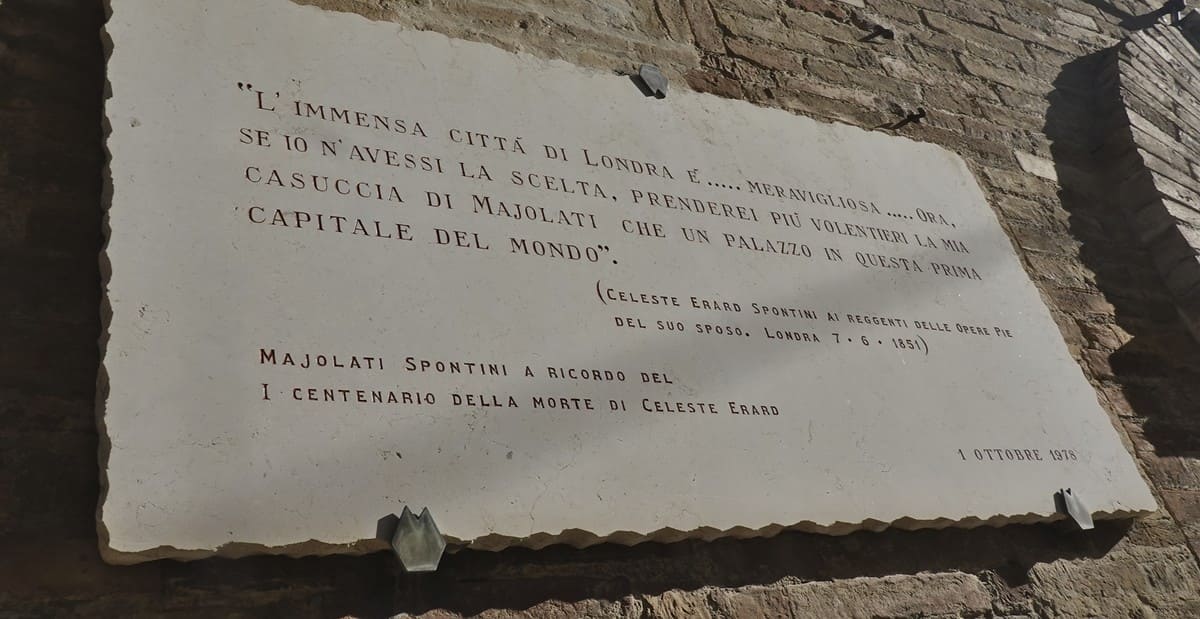

This year, the Marche region is celebrating 250 years of the birth of this composer, so numerous events are planned.
GUIDED VISIT SPONTINI MUSEUM
During the FAI days, a kind of open monument days, the museum opened its doors to the public. I once visited it with the Cupramontana historical circle, but no photos were allowed during that visit.
Finally the opportunity to visit the museum again with photos this time!
First we were shown the garden at the back of the house, nowadays unfortunately a lawn, but at Céleste’s time a beautiful plant garden.


A bust of the composer welcomed us in the entrance and, via a staircase (the original wooden banister had been replaced by a cast iron one with Spontini’s initials during a recent restoration), we reached the first floor.


The various rooms, often with beautifully decorated ceilings, contain the master’s masterpieces in chronological order. But first we saw his baptismal certificate; the 2nd son of 5 boys, therefore destined to become a priest.
He attended the priests’ seminary in Jesi, where he fled, because his vocation was music. The music conservatory in Jesi became his new school, but he also received lessons from the music master Niccolò Bonanni, a very underestimated musical man. A memorial stone next to the San Lorenzo gate in Cupramontana commemorates these lessons.
After a while, Spontini was allowed to attend the important conservatory in Naples, before moving to France in 1803. Here he composed his most important works at Napoleon’s imperial court, under the protection of Empress Josephine.

THE MAIN COMPOSITIONS OF SPONTINI
We saw his most important compositions exhibited in successive museum rooms, often with the original scores and drawings of the costumes from the first performances.
La Vestale would become his greatest success; an opera about the Vestal Virgin Giulia, where the sacred fire was extinguished during a forbidden appointment with Licino, with whom she was in love. The holy priest condemned Giulia to be buried alive. At the last moment, a miracle saved her from this terrible death.



During our tour we were introduced to the other important works such as Milton, Ferdinand Cortez and L’Olympia.
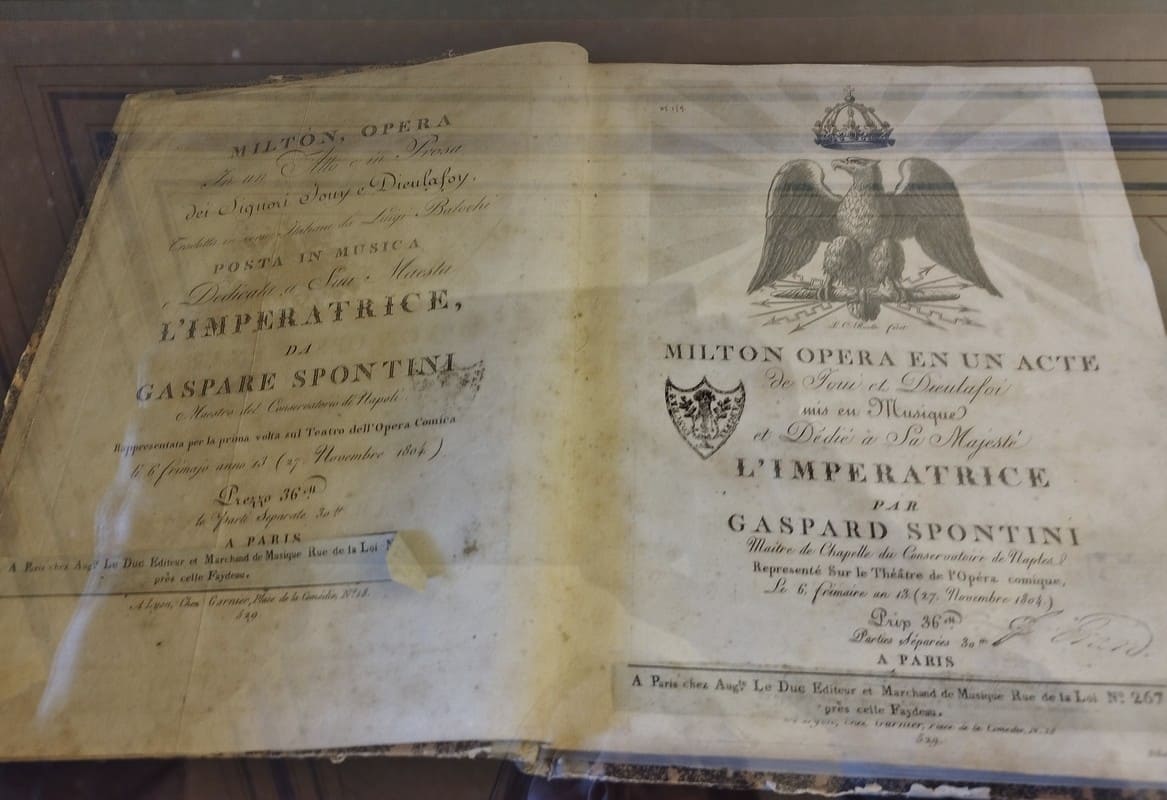


In 1818, the French King Louis XVIII appointed him Knight in the Royal Order of the Legion of Honor.

In Jesi he was elevated to the nobility in 1822.
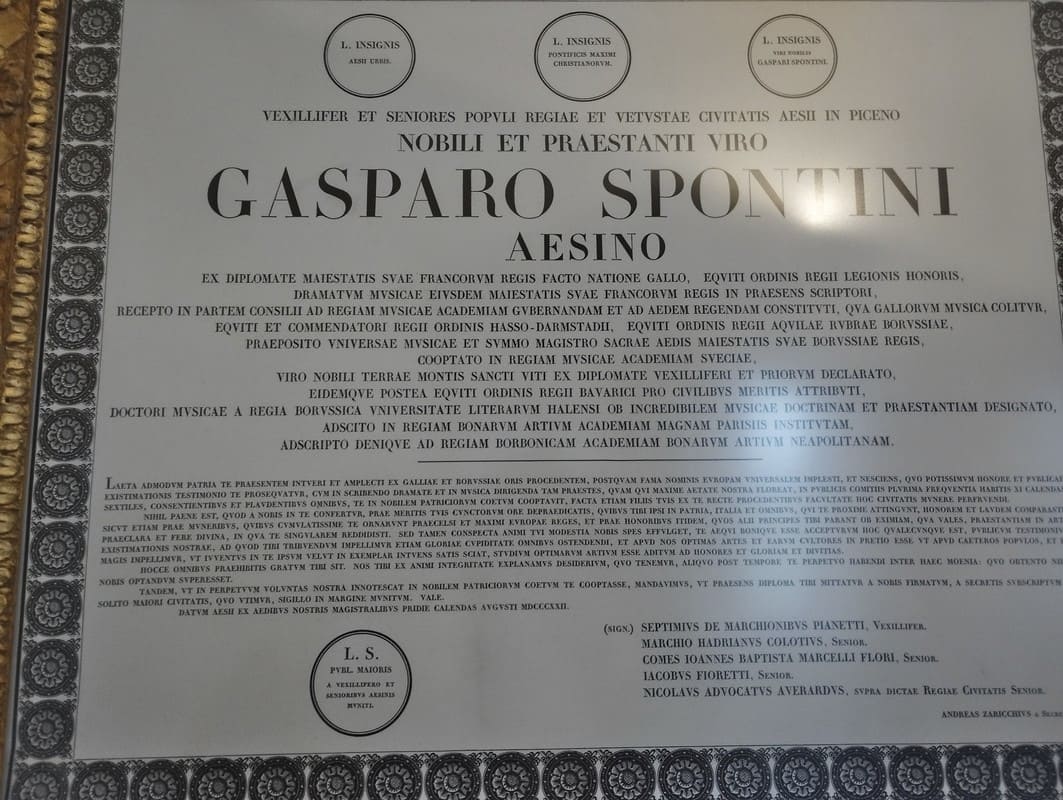
In 1820, the Prussian King Frederick William III ordered him to his court in Berlin, where he was given the title Generalmusikdirektor. He adapted some of his masterpieces for the Prussian court.
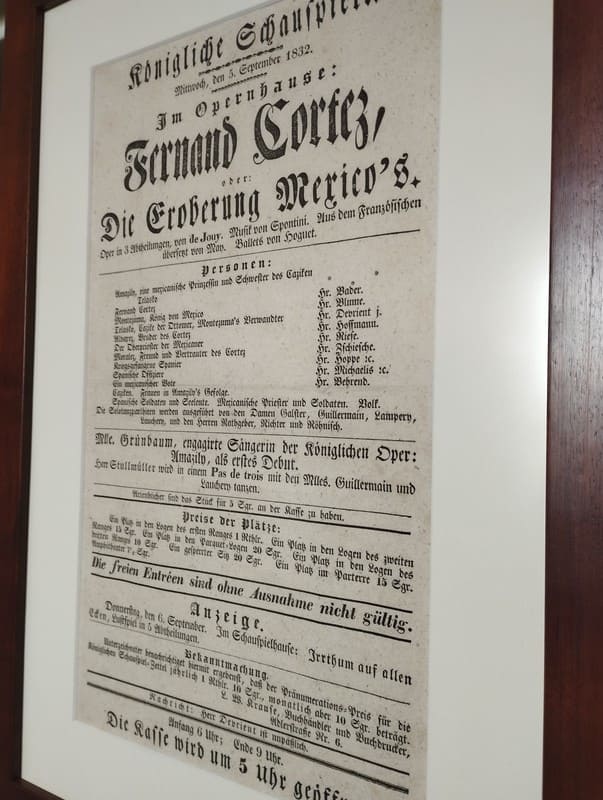
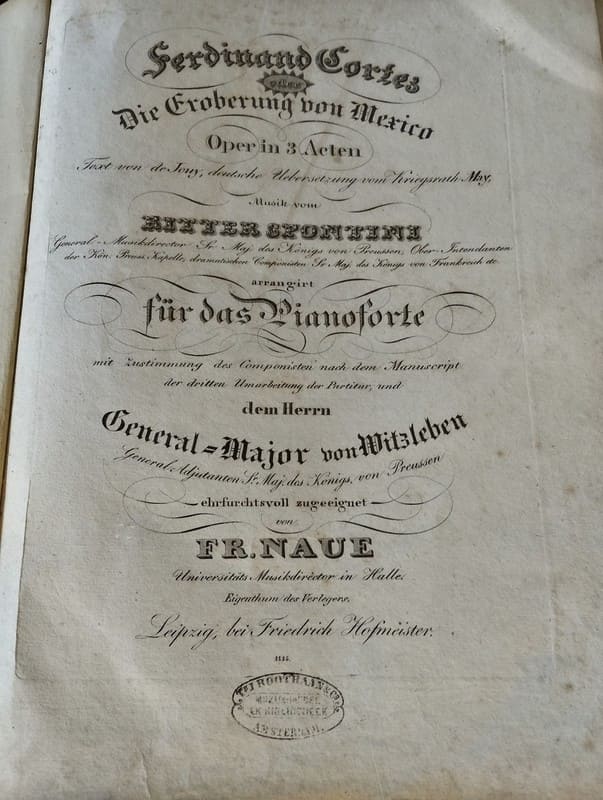

Spontini also composed a song of honor for Frederick William III.

But after the death of this Prussian king, his successor Frederick William IV no longer wanted to use Spontini’s services and even accused him of lèse-majesté. In Dresden he will continue to work with Wagner, who was influenced by Spontini. This is what Wagner wrote as an obituary upon Spontini’s death:
Let us bow reverently before the grave of the creator of the Vestal Virgin (note from Elke: La Vestale), Cortez and Olympia.
Let us bow graciously to the count of the throne of the Vestal Maiden (also known as La Vestale), Cortez at Olympia.Source: “Wagner en Spontini” by Hans Engel, 1955. In it he quotes from Wagner’s collected writings.
Goethe had ook veel waardering voor Spontini en voerde een tijdje een levendige correspondentie met hem.
But then the Marchigian composer returned to Paris and London to finally marry Maiolati in 1950.
PRIVATE ROOMS
We then arrived on the second floor of the museum, the most interesting part for non-music connoisseurs. After all, this is where we entered the private quarters of Spontini and his French wife Céleste Erard; the bedroom where he died, his desk where he still wrote music, his private salons and that of his wife.

























Also on display are 2 pianos on which he composed and from the company Erard, father and uncle of his wife.



PARCO COLLE CELESTE
There were also designs for the Colle Celeste park. In 1846, work started on behalf of Spontini and his wife for a public park in Maiolati, but ultimately it would become a simple park with a statue of Mary and a beautiful view of the surroundings at the end.
Nowadays, the residents of Maiolati mainly walk there in the summer, looking for coolness under the shady trees. There is also a playground and events are organized there.

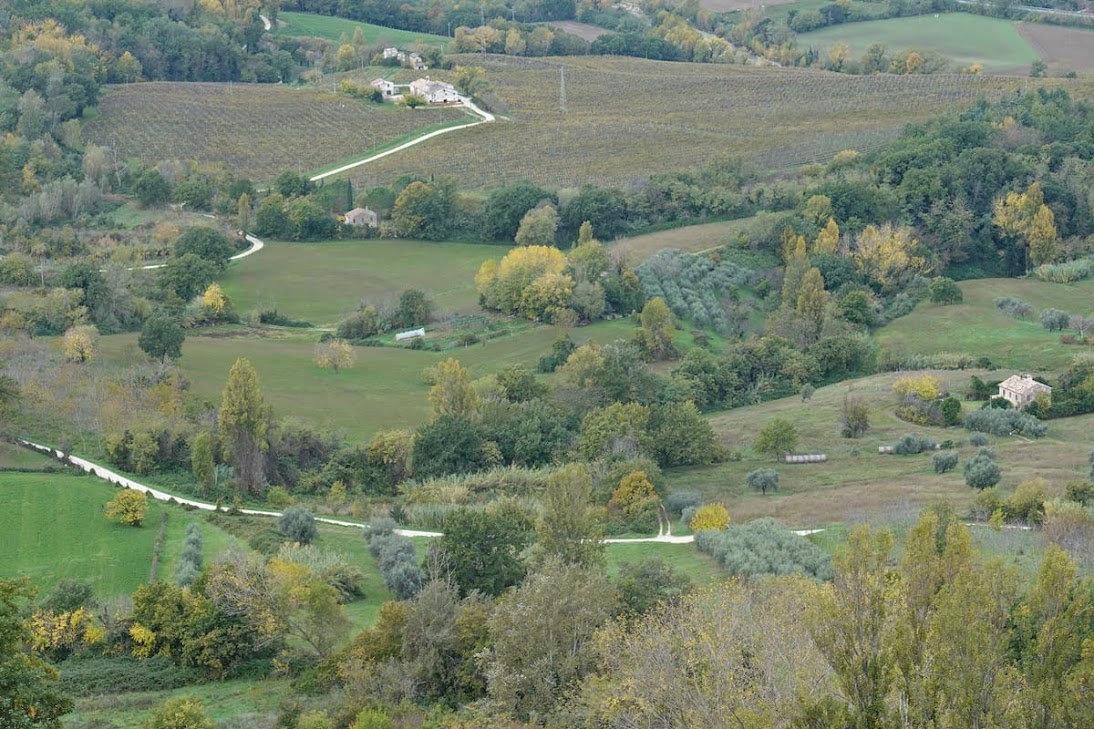
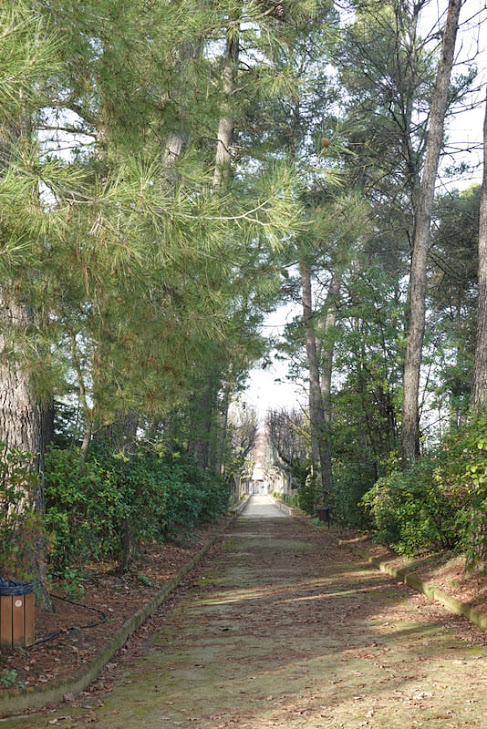
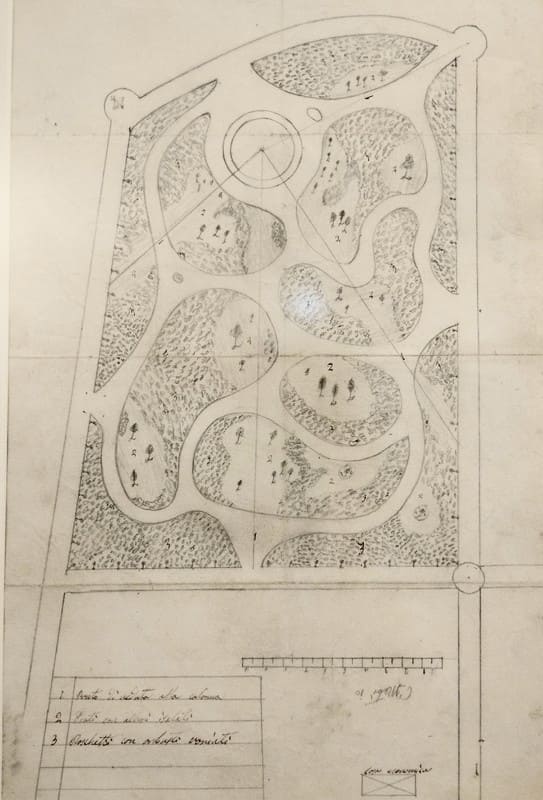

MAUSOLEUM OF SPONTINI
The guided visit continued across the building in the San Giovanni Church.

Spontini’s grave is located here. Immediately after his death, however, his body first ended up in the Santo Stefano church of Maiolati, because the mausoleum was not yet finished in the San Giovanni church.
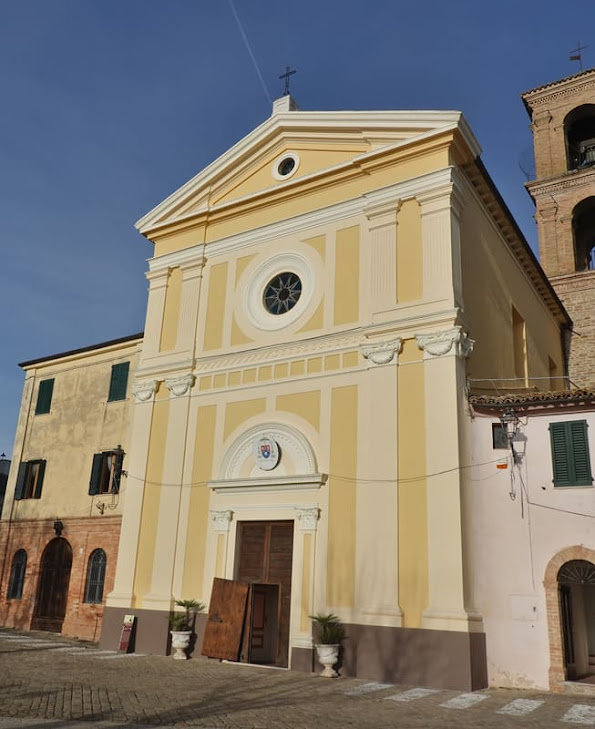
In the Santo Stefano church there is a beautiful organ by the famous Venezian organ builders Callido from the 18th century, donated in 1811 by Gaspare Spontini to his brother Don Antonio, the then pastor of this church, and to the organist Don Venanzo, another brother of his.

In 1853 his body moved to its final place, in his mausoleum, which is located on the left in the San Giovanni Church.



Above the altar we saw a special work of art from the 19th century, commissioned in Rome by Céleste immediately after the death of her husband: a crucifix attached to a painting entitled the Crucifixion with Mary, Saint John and Maddalena.
The spot opposite Spontini’s mausoleum was actually intended for Céleste’s tomb. But she died in France at the age of 88 and was buried in the famous Père la Chaise cemetery in Paris. Every now and then there are calls for her body to be moved to Maiolati.
TIPS:
The Spontini year started on March 17, 2024 with a concert in the Pergolesi theater in Jesi. None other than the world-famous conductor and ex-director of La Scala in Milan Ricardo Muti was allowed to open this anniversary year. If you are interested in the next events of the 250 years of Spontini, please consult this website.

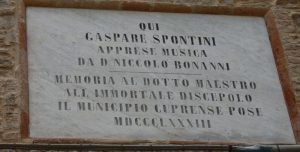
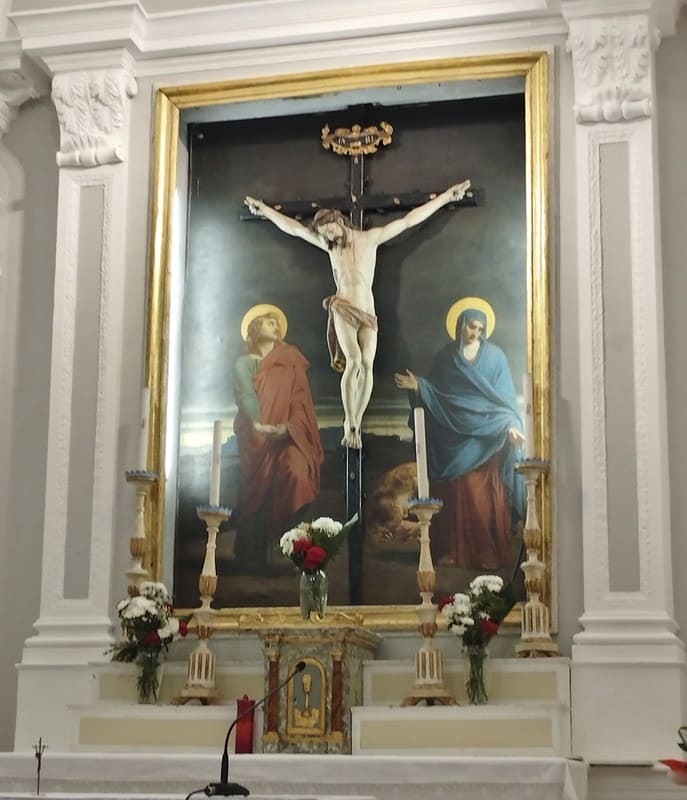
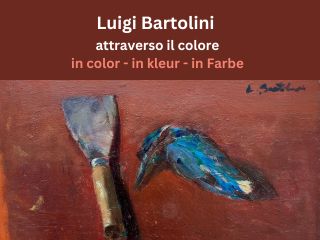


0 Comments